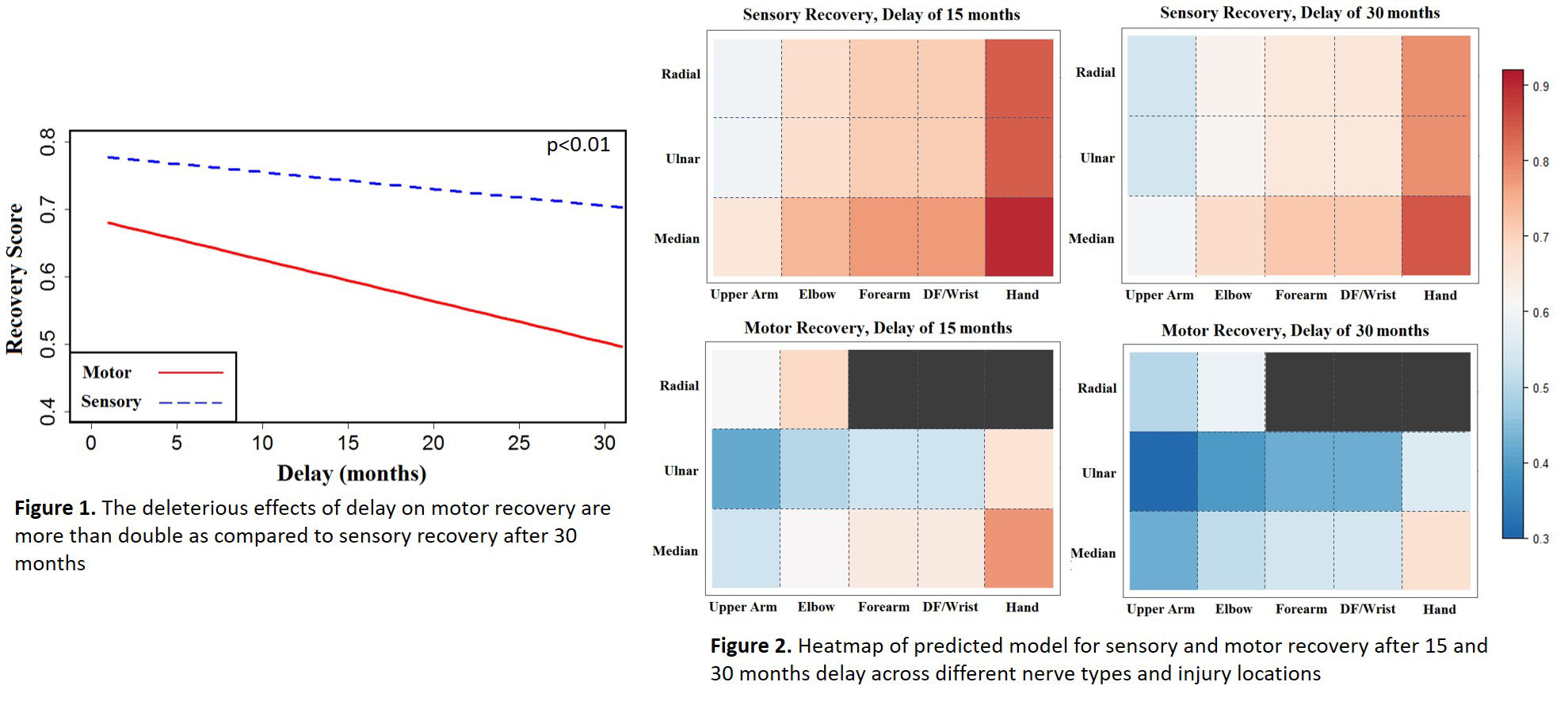A systematic review and meta-analysis exploring the relative impact of delayed nerve repair on motor vs. sensory recovery
Karim A. Sarhane, MD, MSc1, Heather Shappell, PhD1, Benjamin Slavin, BS1, Nicholas von Guionneau, MD1, Philip Hanwright, MD1, Gregory Borschel, MD2, Sami Tuffaha, MD1.
1Johns Hopkins University, Baltimore, MD, USA, 2University of Toronto, Toronto, ON, Canada.
BACKGROUND: Meaningful recovery of motor function following peripheral nerve injury requires timely reinnervation before muscle atrophy occurs. Sensory recovery is thought to be less time-sensitive because sensory receptors are spared from atrophy. This thinking has been challenged by recent insights from animal research demonstrating that Schwann cells within the distal stump lacking axonal interaction senesce and lose their capacity to support axonal regeneration. The clinical implications of these findings remain unclear. In this study, we systematically examined the literature for cases of secondary nerve repair to determine the relative impact of delay on sensory vs. motor recovery. METHODS: We reviewed articles describing outcomes following repair of median, ulnar, and radial nerves from 1970-2018. We fit a linear mixed effects model with change in BMRC recovery score as the outcome. We included duration of delay, motor vs. sensory classification, interaction between outcome and delay, and pre-operative functional score as fixed effects. We included a random subject effect to account for multiple observations on the same subject. We performed backwards step-wise regression utilizing additional covariates (type of nerve, location and type of injury, and adjacent injuries). Our final model allowed us to predict motor and sensory recovery based on the duration of delay, type of nerve, location of injury, and pre-operative M/S functional score. RESULTS: Out of 1621 articles, 21 with a total of 448 patients were included. After adjusting for preoperative score, the negative effects of delay were found to be more than twice as large for motor recovery than sensory recovery (p<0.01). Backwards step-wise regression yielded a final model that included pre-operative score, motor/sensory classification, delay, injury location, nerve type, an interaction between delay and motor vs. sensory, and an interaction between nerve type and motor vs. sensory as significant predictors of recovery (p<0.05). The effect of delay on recovery remained significantly different for motor vs. sensory groups after adjustment (Fig.1, p<0.01). Moreover, our model allowed us to predict recovery based on type of nerve, injury location, and delay (Fig.2). CONCLUSIONS: This study demonstrates that delayed nerve repair has a greater deleterious effect on motor than sensory recovery. This supports the hypothesis that chronic denervation of the distal regenerative pathway has a modest effect on recovery in comparison to the more pronounced effects of muscle atrophy. Importantly, this study provides the first model that can predict motor and sensory recovery following nerve repair based on the duration of delay.

Back to 2019 Posters
